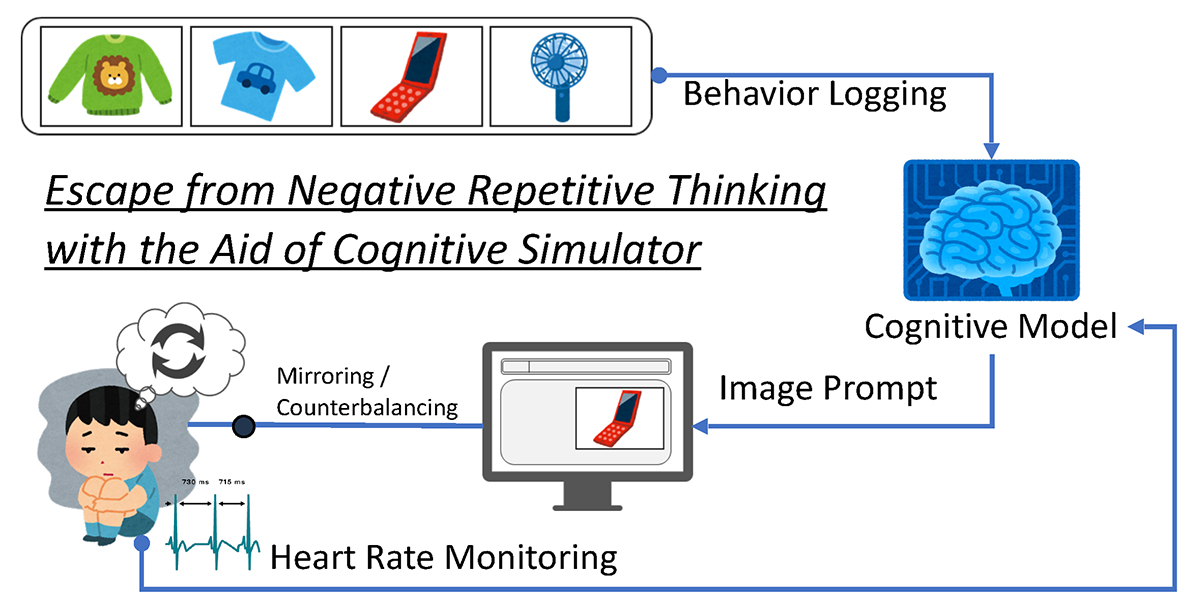Junya Morita, Associate Professor at Shizuoka, discusses the mechanisms of negative collective behaviours in online society, and technology behind combatting them
While web technology has drastically changed our lives and society, emotional problems that had previously been rare have increased in number and severity. Such issues are becoming more serious these days, sometimes inducing large-scale negative collective behaviours such as flaming, cyberbullying and cyberstalking. Although the social and legal systems regulating these issues have been actively discussed, interventions based on the understanding of the cognitive and emotional mechanisms remain severely underdeveloped.
Concerning these mechanisms, researchers have pointed out that the negative side-effects of technology are emphasised, and they are metaphorically as severe as drug addiction, creating repetitive overuse. Such behavioural addiction can be considered especially problematic if users have symptoms of mental illness. Rumination, for example, is a psychological state related to depressive mood that involves repetitive negative thinking on a specific topic. Technologically enhanced and socially accumulated ruminative thinking could cause a severe disaster in our society, with synergistic effects through the echo chamber mechanism.
From a more microscopic viewpoint, combining such a negative mental state with information technology causes severe negative symptoms through a feedback loop. Information technology removes limits from cognitive boundaries that had evolved throughout the history of humanity. Humans naturally forget information that is not relevant to their current task, and because of this mental function, they can focus on the situations they encounter. However, the web environment provides decay-less information desired by users without any time constraints. This convenience induces addictive behaviour, and people cannot resist using it even when they are aware of the irrationality of their own behaviour.
Interventions based on simulation of mental processes
Considering emotional problems caused by the web as incompatible with the nature of human memory, Morita and colleagues engaged in a research project under the Topic-Setting Program to Advance Cutting-Edge Humanities and Social Sciences Research Responding to Real Society administrated by JSPS. In their study, they constructed a system that combines cognitive modelling of human memory with information prompts regulated by physiological sensing.
Image prompt based on behaviour logging
To naturally intervene in ruminative behaviour, web advertisements such as behavioural targeting can be used. This type of online intervention is assumed to prompt behavioural changes conducive to psychological health. Thus, the system collects user experiences in natural web browsing activities. When the user visits shopping sites, the system automatically collects product images displayed on the browser screen. The collected images are converted into a knowledge structure harnessing images with semantic attributes that are extracted based on deep learning technology. The constructed knowledge structure is assumed as a semantic network to allow the system to successively retrieve images according to the semantic association. The browser extension program embedded in the users’ web environment presents such sequences of retrieval on the browser screen as forms of web advertisement.
Model of human memory and emotion
The images sequence on the browser is regulated with a model simulating human memory, which in turn is regulated by the activation mechanism of memory items, mainly consisting of recency and frequency effects. Thus, recently corrected and frequently visited images are more likely to be presented on the screen. With these effects alone, the model naturally converges to a specific memory item, leading to repetitive displays on the browser screen. To escape such repetitive memory recall, probabilistic noise is added to the activation. If the noise fluctuates widely, the possibility of escaping this feedback loop increases. As a mechanism of modulating the noise fluctuation, the variance of the noise is mapped onto the activation of noradrenaline. That is, when the model is in a stressed situation, the output of the model converges; meanwhile, in a relaxed situation, the model outputs a variety of behaviours.
Mirroring/counterbalancing heart rate variability
Based on the above model, Morita and colleagues developed two types of real-time parameter modulations: mirroring and counterbalancing models. In the mirroring model, the noise variance is replaced with the user’s physiological state, which is directly obtained from a heart rate sensor. The memory noise based on the current user’s heart rate variability (HRV) leads to a large fluctuation in image retrieval when the user is relaxed, because HRV increases in the parasympathetic dominance state. In other words, when the user feels stressed and anxious, the activation value always outputs the same images as having high recency and frequency effect. Therefore, this mirroring model where noise size corresponds to HRV synchronises the ruminative behaviour with participants. Contrarily, the counterbalancing model modulates the noise size as an inverse of the user’s HRV, thereby behaving as a correction for the ruminative behaviour. This counterbalancing model plays a role of a technologically enhanced homeostasis system that regulates the user’s memory recall through web advertisement.
Evidence and implications
The developed system was tested with a lab experiment where the participants were first induced into a negative mood. By observing the recovery process in the subsequent web-searching task, the effect of the counterbalancing approach was observed in users shifting out of the negative mood. The users who were presented with a sequence of counterbalancing images reported their moods to be less negative after the task than those who were presented with the mirroring sequence. From this result, the approach taken here can be seen as a possible candidate for realising harmony between natural and artificial cognitive systems, thereby balancing emotional issues in this digital age.
Acknowledgement
This work has been conducted in collaboration with Mr. Thanakit Pitakchokchai, Mr. Giri Basanta Raj, Dr. Yusuke Yamamoto, Prof. Hiroyasu Yuhashi, and Prof. Teppei Koguchi from Shizuoka Univerisity under the Topic-Setting Program to Advance Cutting-Edge Humanities and Social Sciences Research administrated by JSPS.
Please note: This is a commercial profile
© 2019. This work is licensed under CC-BY-NC-ND.












